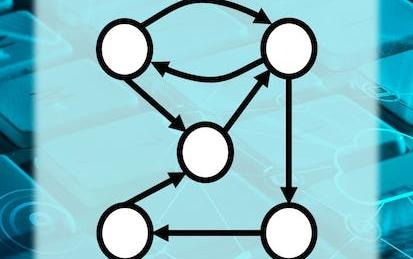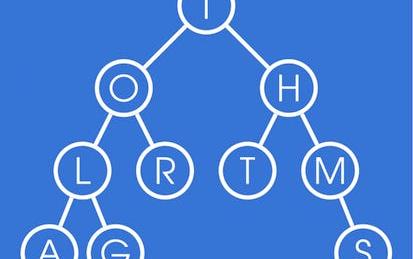

Our Courses

Convolutional Neural Networks
In the fourth course of the Deep Learning Specialization, you will understand how computer vision has evolved and become familiar with its exciting applications such as autonomous driving, face recognition, reading radiology images, and more. By the end, you will be able to build a convolutional neural network, including recent variations such as residual networks; apply convolutional networks to visual detection and recognition tasks; and use neural style transfer to generate art and apply these algorithms to a variety of image, video, and other 2D or 3D data.
-
Course by

-
 Self Paced
Self Paced
-
 36 hours
36 hours
-
 English
English

Introduction to Statistics & Data Analysis in Public Health
Welcome to Introduction to Statistics & Data Analysis in Public Health! This course will teach you the core building blocks of statistical analysis - types of variables, common distributions, hypothesis testing - but, more than that, it will enable you to take a data set you've never seen before, describe its keys features, get to know its strengths and quirks, run some vital basic analyses and then formulate and test hypotheses based on means and proportions. You'll then have a solid grounding to move on to more sophisticated analysis and take the other courses in the series.
-
Course by

-
 Self Paced
Self Paced
-
 16 hours
16 hours
-
 English
English

Data Structures and Performance
How do Java programs deal with vast quantities of data? Many of the data structures and algorithms that work with introductory toy examples break when applications process real, large data sets. Efficiency is critical, but how do we achieve it, and how do we even measure it? This is an intermediate Java course. We recommend this course to learners who have previous experience in software development or a background in computer science, and in particular, we recommend that you have taken the first course in this specialization (which also requires some previous experience with Java).
-
Course by

-
 Self Paced
Self Paced
-
 42 hours
42 hours
-
 English
English

Mastering the Software Engineering Interview
You’ve hit a major milestone as a computer scientist and are becoming a capable programmer. You now know how to solve problems, write algorithms, and analyze solutions; and you have a wealth of tools (like data structures) at your disposal. You may now be ready for an internship or (possibly) an entry-level software engineering job. But can you land the internship/job? It depends in part on how well you can solve new technical problems and communicate during interviews. How can you get better at this? Practice!
-
Course by

-
 Self Paced
Self Paced
-
 21 hours
21 hours
-
 English
English

Advanced Data Structures in Java
How does Google Maps plan the best route for getting around town given current traffic conditions? How does an internet router forward packets of network traffic to minimize delay? How does an aid group allocate resources to its affiliated local partners? To solve such problems, we first represent the key pieces of data in a complex data structure. In this course, you’ll learn about data structures, like graphs, that are fundamental for working with structured real world data. You will develop, implement, and analyze algorithms for working with this data to solve real world problems.
-
Course by

-
 Self Paced
Self Paced
-
 29 hours
29 hours
-
 English
English

Cloud Computing Concepts: Part 2
Cloud computing systems today, whether open-source or used inside companies, are built using a common set of core techniques, algorithms, and design philosophies – all centered around distributed systems. Learn about such fundamental distributed computing "concepts" for cloud computing. Some of these concepts include: clouds, MapReduce, key-value/NoSQL stores, classical distributed algorithms, widely-used distributed algorithms, scalability, trending areas, and much, much more! Know how these systems work from the inside out.
-
Course by

-
 Self Paced
Self Paced
-
 20 hours
20 hours
-
 English
English

Java Programming: Principles of Software Design
Solve real world problems with Java using multiple classes. Learn how to create programming solutions that scale using Java interfaces. Recognize that software engineering is more than writing code - it also involves logical thinking and design. By the end of this course you will have written a program that analyzes and sorts earthquake data, and developed a predictive text generator. After completing this course, you will be able to: 1. Use sorting appropriately in solving problems; 2. Develop classes that implement the Comparable interface; 3.
-
Course by

-
 Self Paced
Self Paced
-
 13 hours
13 hours
-
 English
English

Cloud Computing Applications, Part 2: Big Data and Applications in the Cloud
Welcome to the Cloud Computing Applications course, the second part of a two-course series designed to give you a comprehensive view on the world of Cloud Computing and Big Data! In this second course we continue Cloud Computing Applications by exploring how the Cloud opens up data analytics of huge volumes of data that are static or streamed at high velocity and represent an enormous variety of information. Cloud applications and data analytics represent a disruptive change in the ways that society is informed by, and uses information.
-
Course by

-
 Self Paced
Self Paced
-
 20 hours
20 hours
-
 English
English

Advanced Machine Learning and Signal Processing
>>> By enrolling in this course you agree to the End User License Agreement as set out in the FAQ. Once enrolled you can access the license in the Resources area <<<\n\nThis course, Advanced Machine Learning and Signal Processing, is part of the IBM Advanced Data Science Specialization which IBM is currently creating and gives you easy access to the invaluable insights into Supervised and Unsupervised Machine Learning Models used by experts in many field relevant disciplines.
-
Course by

-
 28 hours
28 hours
-
 English
English

Cluster Analysis in Data Mining
Discover the basic concepts of cluster analysis, and then study a set of typical clustering methodologies, algorithms, and applications. This includes partitioning methods such as k-means, hierarchical methods such as BIRCH, and density-based methods such as DBSCAN/OPTICS. Moreover, learn methods for clustering validation and evaluation of clustering quality. Finally, see examples of cluster analysis in applications.
-
Course by

-
 17 hours
17 hours
-
 English
English

Java Programming: Solving Problems with Software
Learn to code in Java and improve your programming and problem-solving skills. You will learn to design algorithms as well as develop and debug programs. Using custom open-source classes, you will write programs that access and transform images, websites, and other types of data. At the end of the course you will build a program that determines the popularity of different baby names in the US over time by analyzing comma separated value (CSV) files. After completing this course you will be able to: 1. Edit, compile, and run a Java program; 2. Use conditionals and loops in a Java program; 3.
-
Course by

-
 Self Paced
Self Paced
-
 17 hours
17 hours
-
 English
English

Advanced Trading Algorithms
This course will provide back test results for all the strategies in developed and emerging markets. The learner will also be taught scientific ways of back testing without succumbing to either look ahead (or) survival bias. You will learn various methods of building a robust back testing system for the strategies discussed in the previous course. You will be taught how to differentiate between mere data mining and results based on solid empirical or theoretical foundation.
-
Course by

-
 Self Paced
Self Paced
-
 11 hours
11 hours
-
 English
English

Machine Learning With Big Data
Want to make sense of the volumes of data you have collected? Need to incorporate data-driven decisions into your process? This course provides an overview of machine learning techniques to explore, analyze, and leverage data.
-
Course by

-
 Self Paced
Self Paced
-
 22 hours
22 hours
-
 English
English

Pointers, Arrays, and Recursion
The third course in the specialization Introduction to Programming in C introduces the programming constructs pointers, arrays, and recursion. Pointers provide control and flexibility when programming in C by giving you a way to refer to the location of other data. Arrays provide a way to bundle data by guaranteeing sequences of data are grouped together. Finally, recursive functions—functions that call themselves—provide an alternative to iteration that are very useful for implementing certain algorithms.
-
Course by

-
 Self Paced
Self Paced
-
 21 hours
21 hours
-
 English
English

Finding Hidden Messages in DNA (Bioinformatics I)
Named a top 50 MOOC of all time by Class Central! This course begins a series of classes illustrating the power of computing in modern biology. Please join us on the frontier of bioinformatics to look for hidden messages in DNA without ever needing to put on a lab coat. In the first half of the course, we investigate DNA replication, and ask the question, where in the genome does DNA replication begin?
-
Course by

-
 Self Paced
Self Paced
-
 16 hours
16 hours
-
 English
English
Machine Learning: Classification
Case Studies: Analyzing Sentiment & Loan Default Prediction In our case study on analyzing sentiment, you will create models that predict a class (positive/negative sentiment) from input features (text of the reviews, user profile information,...). In our second case study for this course, loan default prediction, you will tackle financial data, and predict when a loan is likely to be risky or safe for the bank.
-
Course by

-
 Self Paced
Self Paced
-
 21 hours
21 hours
-
 English
English

Introduction to Business Analytics with R
Nearly every aspect of business is affected by data analytics. For businesses to capitalize on data analytics, they need leaders who understand the business analytic workflow. This course addresses the human skills gap by providing a foundational set of data processing skills that can be applied to many business settings. In this course you will use a data analytic language, R, to efficiently prepare business data for analytic tools such as algorithms and visualizations.
-
Course by

-
 Self Paced
Self Paced
-
 17 hours
17 hours
-
 English
English

Symmetric Cryptography
Welcome to Symmetric Cryptography! Symmetric cryptography relies on shared secret key to ensure message confidentiality, so that the unauthorized attackers cannot retrieve the message. The course describes substitution and transposition techniques, which were the bases for classical cryptography when the message is encoded in natural language such as English. Then, we build on product ciphers (using both substitution and transposition/permutation) to describe modern block ciphers and review the widely used cipher algorithms in DES, 3-DES, and AES.
-
Course by

-
 Self Paced
Self Paced
-
 13 hours
13 hours
-
 English
English

Advanced Algorithms and Complexity
In previous courses of our online specialization you've learned the basic algorithms, and now you are ready to step into the area of more complex problems and algorithms to solve them. Advanced algorithms build upon basic ones and use new ideas. We will start with networks flows which are used in more typical applications such as optimal matchings, finding disjoint paths and flight scheduling as well as more surprising ones like image segmentation in computer vision.
-
Course by

-
 Self Paced
Self Paced
-
 27 hours
27 hours
-
 English
English

Mathematical Thinking in Computer Science
Mathematical thinking is crucial in all areas of computer science: algorithms, bioinformatics, computer graphics, data science, machine learning, etc. In this course, we will learn the most important tools used in discrete mathematics: induction, recursion, logic, invariants, examples, optimality. We will use these tools to answer typical programming questions like: How can we be certain a solution exists? Am I sure my program computes the optimal answer?
-
Course by

-
 Self Paced
Self Paced
-
 42 hours
42 hours
-
 English
English
VLSI CAD Part I: Logic
A modern VLSI chip has a zillion parts -- logic, control, memory, interconnect, etc. How do we design these complex chips? Answer: CAD software tools. Learn how to build thesA modern VLSI chip is a remarkably complex beast: billions of transistors, millions of logic gates deployed for computation and control, big blocks of memory, embedded blocks of pre-designed functions designed by third parties (called “intellectual property” or IP blocks). How do people manage to design these complicated chips?
-
Course by

-
 Self Paced
Self Paced
-
 23 hours
23 hours
-
 English
English

Algorithmic Toolbox
This online course covers basic algorithmic techniques and ideas for computational problems arising frequently in practical applications: sorting and searching, divide and conquer, greedy algorithms, dynamic programming. We will learn a lot of theory: how to sort data and how it helps for searching; how to break a large problem into pieces and solve them recursively; when it makes sense to proceed greedily; how dynamic programming is used in genomic studies.
-
Course by

-
 Self Paced
Self Paced
-
 40 hours
40 hours
-
 English
English

Ordered Data Structures
In this course, you will learn new data structures for efficiently storing and retrieving data that is structured in an ordered sequence. Such data includes an alphabetical list of names, a family tree, a calendar of events or an inventory organized by part numbers. The specific data structures covered by this course include arrays, linked lists, queues, stacks, trees, binary trees, AVL trees, B-trees and heaps. This course also shows, through algorithm complexity analysis, how these structures enable the fastest algorithms to search and sort data.
-
Course by

-
 Self Paced
Self Paced
-
 19 hours
19 hours
-
 English
English

Machine Learning: Clustering & Retrieval
Case Studies: Finding Similar Documents A reader is interested in a specific news article and you want to find similar articles to recommend. What is the right notion of similarity? Moreover, what if there are millions of other documents? Each time you want to a retrieve a new document, do you need to search through all other documents? How do you group similar documents together? How do you discover new, emerging topics that the documents cover? In this third case study, finding similar documents, you will examine similarity-based algorithms for retrieval.
-
Course by

-
 Self Paced
Self Paced
-
 17 hours
17 hours
-
 English
English

Algorithms on Strings
World and internet is full of textual information. We search for information using textual queries, we read websites, books, e-mails. All those are strings from the point of view of computer science. To make sense of all that information and make search efficient, search engines use many string algorithms. Moreover, the emerging field of personalized medicine uses many search algorithms to find disease-causing mutations in the human genome. In this online course you will learn key pattern matching concepts: tries, suffix trees, suffix arrays and even the Burrows-Wheeler transform.
-
Course by

-
 Self Paced
Self Paced
-
 19 hours
19 hours
-
 English
English



